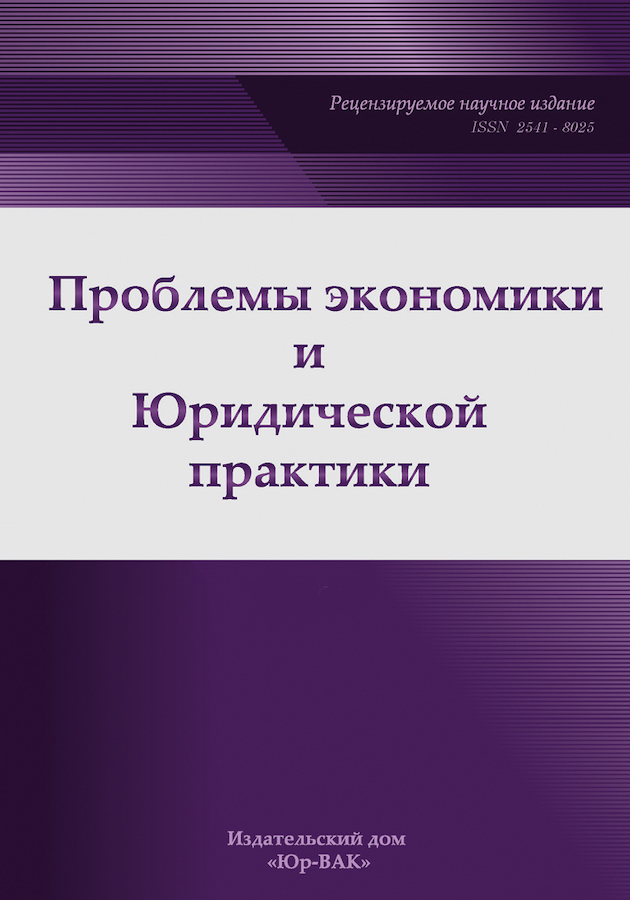Developing an organisational and technologic model for making managerial decisions in a network of rehabilitation hospitals
- 作者: Prichina O.S.1, Orekhov V.D.2, Moroga D.F.3
-
隶属关系:
- University «Synergy»
- International Institute of Management LINK
- Peoples’ Friendship University of Russia named after Patrice Lumumba
- 期: 卷 19, 编号 5 (2023)
- 页面: 229-239
- 栏目: Regional and Sectoral Economics
- URL: https://journals.eco-vector.com/2541-8025/article/view/627041
- EDN: https://elibrary.ru/UVKKYS
- ID: 627041
如何引用文章
详细
The investigation is aimed to shape and present arguments under an organisational and technologic model for a network of rehabilitation hospitals that would underpin well-founded managerial decisions on improving performance of a healthcare organisation. The author considers a range of organisational and technologic models, their algorithms, practical results achieved after adapting these models and compares their advantages and applicability. Application of an ‘input-output’ model has revealed a wide range (350) of diseases of MSD patients with this fact affecting heavily surgery processes and physical education as well. The analysed mathematical model of how feedback affects the flow of patients who come to a hospital shows that important are factors of promotion and patients who choose alternative recovery methods, not just a number of cured patients, patients who continue their treatment and dissatisfied patients. An operational analysis of patient attendance reveals that efficiency may decline due to an imbalance between short time a doctor examines their patient and long classes at the gym with instructors. Attendance analysis using a ‘fulfillment-importance’ matrix reveals that about a half of performance aspects needs to be improved at LPR hospital though not urgently. Following the investigation results, a Balance Score Card was designed for a network of LPR hospitals and this facilitated setting main goals on improving their performance. Comparison of the network models shows that their applicability differs and in totality they help achieve meaningful results in improving performance of the organisation.
全文:
作者简介
Olga Prichina
University «Synergy»
编辑信件的主要联系方式.
Email: olgaprichina@mail.ru
ORCID iD: 0000-0002-3069-3755
Dr. Sci. (Econ.), Professor, Professor of the Department of Economic Theory and World Economy
俄罗斯联邦, MoscowViktor Orekhov
International Institute of Management LINK
Email: vorehov@yandex.ru
ORCID iD: 0000-0002-5970-207X
Cand. Sci. (Eng.), Director of the scientific and educational center
俄罗斯联邦, ZhukovskyDenuts Moroga
Peoples’ Friendship University of Russia named after Patrice Lumumba
Email: denuts@moroga.ru
ORCID iD: 0000-0003-0076-2200
postgraduate student, Medical Institute
俄罗斯联邦, Moscow参考
- Campbell, A., Yeung, S. (1991) «Creating a sense of mission» from Long Range Planning 24 (4) pp. 10–20, Oxford: Pergamon Press.
- Garvin D. A. (1998) The processes of organisation and management, Sloan Management Review, Cambridge; Summer, pp. 35–37.
- Hayes, R. H. and Wheelwright, S. C. (1984) Restoring our Competitive Edge, New York,Wiley & Sons.
- Slack, N. (1994) «The importance–performance matrix as a determinant of improvement priorities», International Journal of Operations and Production Management, Vol. 14, No. 5, pp. 59–75.
- Albert M., Mescon M., Heduori F. Fundamentals of management. Publishing house «Williams». —2006.
- Blackmon K. Understanding operations, Study guide, course «Managing performance and change», block 1, book 3 / Translated from English—Zhukovsky: IIM LINK, 2004.
- Dolgova I. G., Shchepin V. O., Proklova T. N. Peculiarities of adapting Balance Score Card to efficiency assessment of introduction of a process-based approach into a regional eye care system. Bulletin of Semashko National Research Institute of Public Health.—2016, p.p. 48–55.
- Kaplan R. Balance Score Card. From Strategy to Action / R.Kaplan, D.Norton—M.: ZAO «Olimp-Business», 2003. 214 p.p.
- Kiselev A. R., Vodolazov A. M., Posnenkova O. M., Gridnev V. I. An organisational and technologic model of medical care provision for arterial hypertension. Cardio-IT, 2014, No 3. doi: 10.15275/cardioit.2014.0303 https://cardio-it.ru/2014-0303.
- Kicha D. I., Moroga D. F., Rukodayny O. V., Goloshchapov-Aksenov R. S. Medical and demographic characteristics of patients at the stage of rehabilitation and health care in non-state medical centers for the treatment of spine and joints // Bulletin of the National Research Institute of Public Health named after N. A. Semashko. No.2, 2023. pp. 95–102. doi: 10.25742/NRIPH.2023.02.014.
- Knyazyuk N. F. From quality management to strategic management basing on Balance Score Card in a healthcare organisation. Healthcare manager. No 4, 2010, p.p. 21–29.
- Popova Yu. V., Kiselev A. R., Vodolazov A. M. et al. An organisational and technologic model of medical care provision for coronary heart disease. Cardio-IT 2014; 1: 0302.














